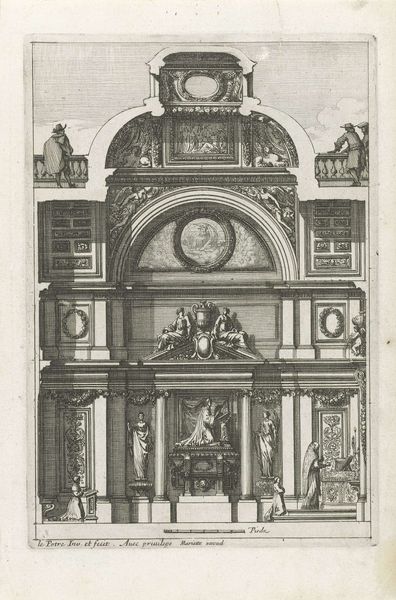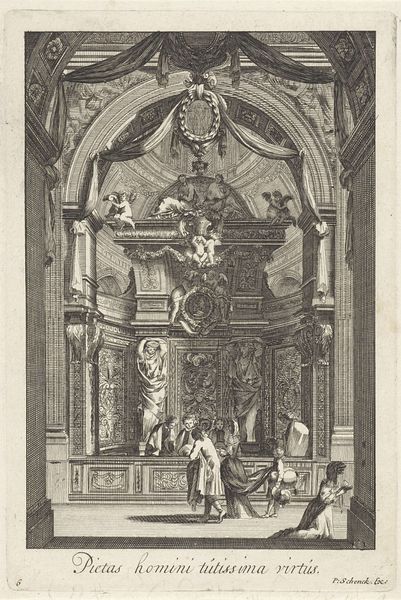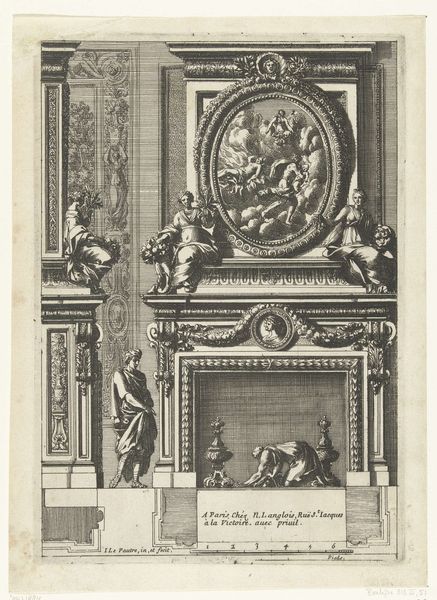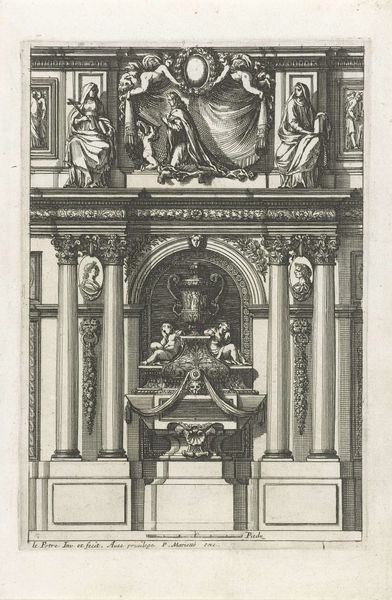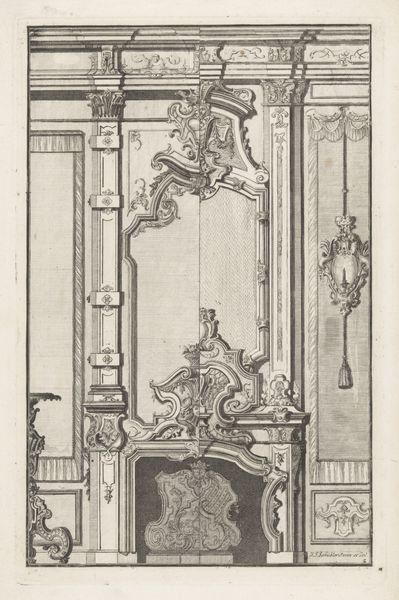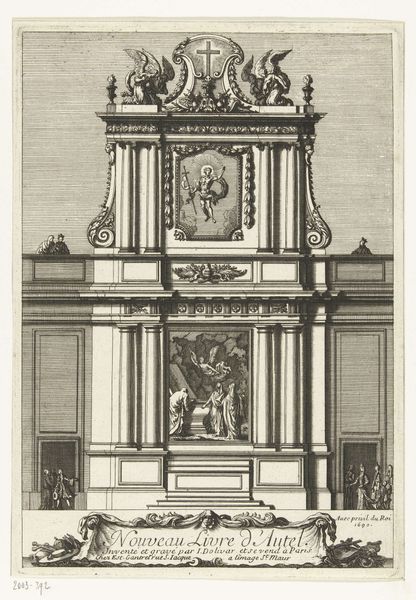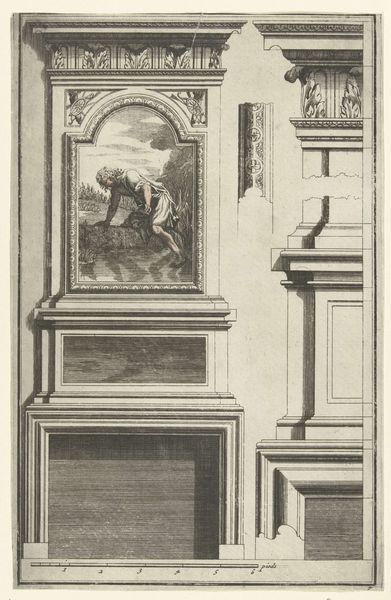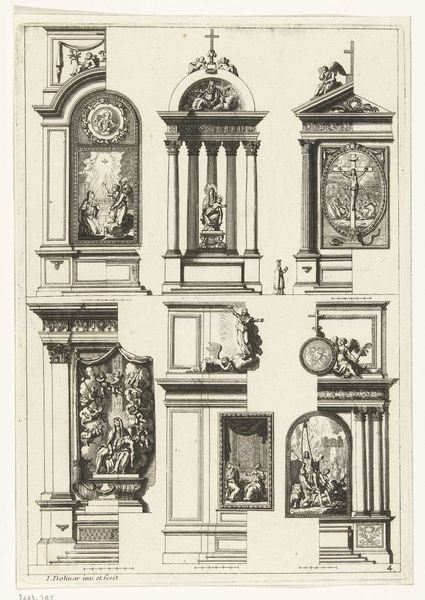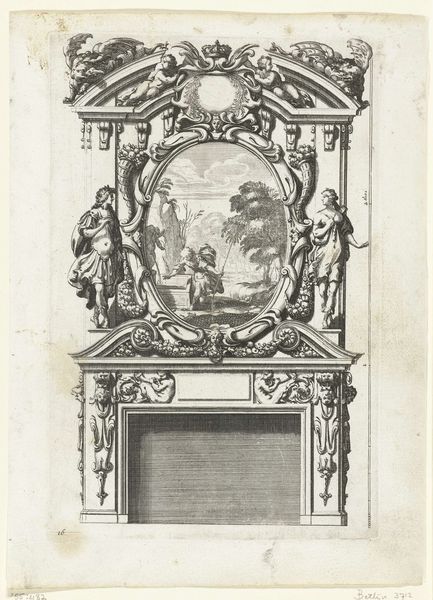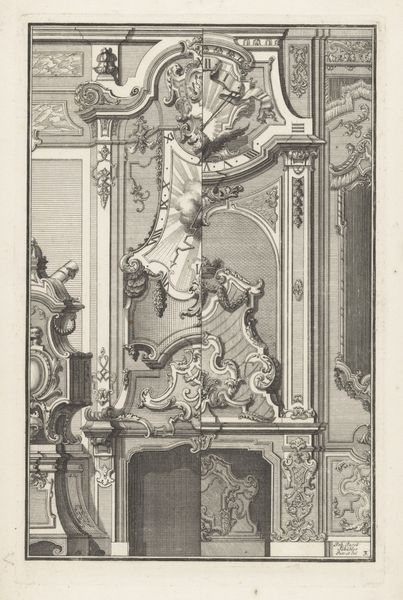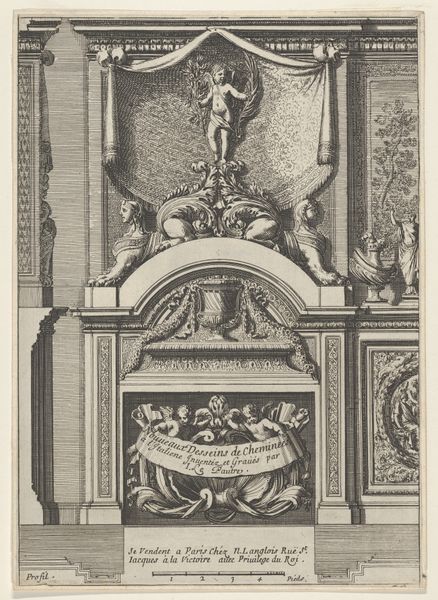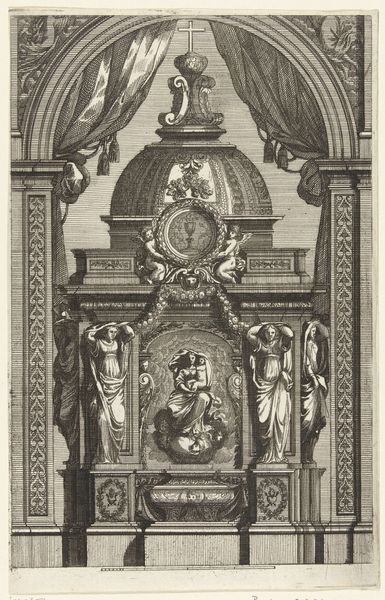
drawing, ink, engraving, architecture
#
drawing
#
allegory
#
baroque
#
form
#
ink
#
line
#
engraving
#
architecture
Dimensions: height 220 mm, width 153 mm
Copyright: Rijks Museum: Open Domain
Editor: So, here we have "Ontwerp voor altaar," or "Design for an Altar," an ink and engraving piece from 1690, currently housed in the Rijksmuseum. The level of detail is pretty striking. How would you interpret this Baroque design? Curator: What I see is a fascinating intersection of religious fervor and political messaging, common in Baroque art. The altar isn't just a sacred space; it's a stage. Consider how altars in churches functioned as prominent displays of wealth and power, reinforcing the Church's authority, as well as serving as pedagogical devices during an era of religious and political reform. The abundance of allegorical figures and elaborate architectural elements emphasize control and dominance. Do you think that reading holds true here? Editor: Definitely! The use of line really adds to that sense of grandeur and formality, almost like stagecraft. Were there other design drawings such as this, or notable features about the altar that informed art and architecture at that time? Curator: Yes, absolutely! Drawings like these played a crucial role. The piece served as a visual proposition but was also a symbol of power itself. Baroque altars, often grand commissions, were instrumental in shaping not only the spiritual landscape but the social and political one as well, solidifying the Church's position within society. Think of Bernini's work in Rome - grandeur on this scale became almost a form of propaganda. Editor: That makes so much sense when you view this piece within its social and political context. It’s more than a design. Curator: Exactly! It's a window into the socio-political mechanics of the time, where art served to both inspire devotion and project influence. Editor: Well, I've definitely learned to appreciate this intricate design, not just for its aesthetics, but also as an instrument of socio-political narrative. Curator: Precisely. And hopefully, others can look at it and ask more probing questions about why this piece was designed to function both as art and as politics.
Comments
No comments
Be the first to comment and join the conversation on the ultimate creative platform.
